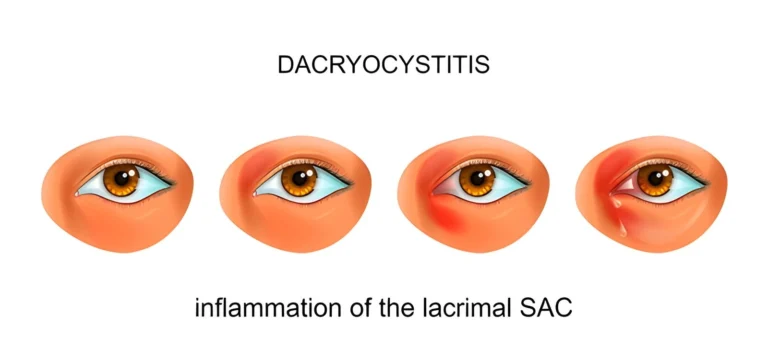Dacryocystitis is an infection of the tear sac (lacrimal sac) caused by a blockage in the tear ducts. This condition can lead to discomfort, swelling, and even severe complications if not addressed. Maintaining good eye health is crucial for preventing dacryocystitis and other eye-related issues. In this blog, we will discuss preventive measures, effective care strategies, and essential tips to help keep your eyes healthy. Additionally, we will also discuss dacryocystitis treatment, chronic dacryocystitis treatment, and dacryocystitis surgery options available for those who suffer from this condition.
Understanding Dacryocystitis
Dacryocystitis occurs when the tear drainage system, responsible for carrying away tears, gets blocked. This leads to the accumulation of tears and creates an environment for bacteria to thrive. The blockage could be caused by an infection, inflammation, or structural issues in the tear duct. The condition is often characterized by symptoms such as swelling near the corner of the eye, pain, redness, and tearing.
If left untreated, dacryocystitis can lead to complications such as abscesses or even cellulitis. Therefore, knowing how to prevent this condition and understanding available treatment options is crucial for eye health.
1. Maintain Proper Eye Hygiene
One of the most effective ways to prevent dacryocystitis is to maintain proper eye hygiene. Keeping your eyes clean and free from irritants or bacteria is essential. Washing your hands regularly and avoiding touching your face or eyes can significantly reduce the chances of introducing bacteria into the tear ducts.
To clean your eyes:
- Use a soft, clean cloth to wipe the corners of your eyes gently.
- Use saline or filter water to wash out any dirt or particles.
- Avoid rubbing your eyes, especially when they feel irritated.
Good eye hygiene minimizes the risk of infections and can help prevent dacryocystitis before it develops.
2. Stay Hydrated
Staying hydrated is essential for overall health, including your eyes. Proper hydration ensures that your body can produce enough tears to keep the eyes moist and wash away irritants. Dehydration can lead to dry eyes, increasing the risk of infections like dacryocystitis.
Drink plenty of water throughout the day to maintain proper tear production and keep your tear ducts functioning efficiently. Proper hydration also helps in reducing the chances of chronic dacryocystitis and the need for dacryocystitis treatment in the future.
3. Avoid Eye Irritants
Limit exposure to smoke, dust, and other irritants that can lead to inflammation and infection.
4. Regular Eye Checkups
Regular eye checkups are essential for maintaining optimal eye health. Eye professionals can detect early signs of dacryocystitis or other potential issues before they escalate. In some cases, a blocked tear duct may be asymptomatic in the initial stages but can develop into chronic dacryocystitis over time.
An ophthalmologist can recommend the appropriate dacryocystitis treatment, including early interventions that may prevent the need for more invasive treatments later on, such as dacryocystitis surgery.
5. Recognize Early Symptoms
Recognizing the early symptoms of dacryocystitis can help you seek timely treatment before the condition worsens. If you notice any of the following symptoms, it’s important to consult an eye specialist for dacryocystitis treatment:
- Swelling near the inner corner of the eye
- Pain or tenderness around the eyes
- Redness or irritation near the tear ducts
- Persistent tearing or discharge from the eye
Early intervention can prevent the condition from becoming chronic and reduce the need for more extensive chronic dacryocystitis treatment.
6. Treatment and Management Options for Dacryocystitis
If you develop dacryocystitis, there are several treatment options available depending on the severity and duration of the condition.
Dacryocystitis Treatment:
For acute dacryocystitis, treatment typically involves antibiotics to clear the infection. Warm compresses may also be recommended to alleviate pain and swelling. In some cases, if the infection has caused an abscess, it may need to be drained.
Chronic Dacryocystitis Treatment:
Chronic dacryocystitis occurs when the condition persists or recurs. In such cases, a more long-term approach may be required, including the use of continuous antibiotics or anti-inflammatory medications. Massaging the tear duct area gently can sometimes help unblock the ducts.
Dacryocystitis Surgery:
For more severe cases, especially if the blockage in the tear duct does not resolve with medication, dacryocystitis surgery may be recommended. The most common surgical procedure for chronic dacryocystitis is dacryocystorhinostomy (DCR). This surgery creates a new pathway for tears to drain, bypassing the blocked duct.
Dacryocystitis surgery is generally a safe and effective option for those who experience recurrent or severe dacryocystitis.
At Shri Venkatesh Eye Institute, we are dedicated to providing you with exceptional eye care to protect and enhance your vision. Our team of experienced ophthalmologists, optometrists, and support staff offers personalized treatment options tailored to your needs, whether it’s a routine eye exam, advanced surgery, or care for complex conditions. We believe in the power of clear vision to improve lives, and we are here to guide you every step of the way, making your eye health our top priority.

